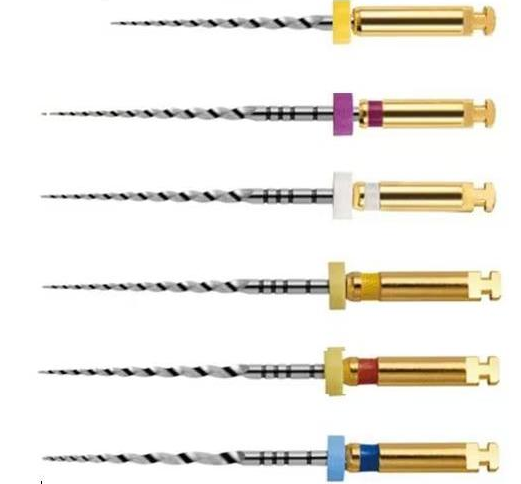A Comprehensive Guide to Rotary Files, Their Uses, and Price Factors
Rotary files are indispensable tools across various industries, particularly in dental practices, metalworking, woodworking, and even hobbyist applications. With their versatility and precision, they serve as essential components for professionals and DIY enthusiasts alike. In this comprehensive guide, we will explore rotary files uses, factors affecting rotary files price, types of rotary files, and expert tips on purchasing and maintaining them.
Introduction to Rotary Files
Rotary files, also known as rotary burrs or rotary rasps, are high-speed cutting tools designed to remove, shape, and refine various materials. They consist of hardened metal bodies with flutes or abrasive surfaces that spin rapidly when attached to a rotary tool, such as a dental handpiece, die grinder, or Dremel.
Their origins can be traced back to early machining and sculpting practices, but advancements in material science and engineering have dramatically expanded their capabilities. Today, rotary files are essential in sectors ranging from endodontic treatment in dentistry to precision fabrication in aerospace engineering.
Key Applications: Rotary Files Uses Across Industries
Understanding rotary files uses reveals just how versatile these tools are. Below are some detailed industry-specific applications:
a. Dentistry
In endodontics, rotary files are essential for root canal treatment. They remove infected pulp and shape the root canal system for optimal sealing. Nickel-titanium (NiTi) rotary files are favored due to their flexibility and resistance to torsional stress.
Key uses include:
- Cleaning canal walls
- Shaping the root canal to desired taper
- Minimizing procedural errors like ledging and perforation
b. Metalworking
Rotary files are invaluable for metal fabrication. They help:
- Deburr edges
- Remove weld seams
- Smooth out surface irregularities
- Shape intricate contours
For hard metals, tungsten carbide rotary files are preferred for their durability.
c. Woodworking
In woodworking, rotary files function similarly to rasps or chisels but with greater control and precision. They are ideal for:
- Carving intricate designs
- Creating joints or grooves
- Sanding hard-to-reach areas
- Shaping furniture components
d. Orthopedics and Podiatry
Rotary files assist in shaping bone during surgical procedures, including joint replacement and corrective foot surgery. Their precision helps minimize tissue trauma and improve surgical outcomes.
e. Hobby and DIY Projects
DIY enthusiasts use rotary files for tasks like:
- Model making
- Jewelry engraving
- Glass etching
- Stone carving
Kits with multiple file types are popular among hobbyists for their versatility.

Types of Rotary Files and Their Functional Differences
Rotary files come in a variety of shapes and compositions, each tailored to specific tasks.
a. Shape-Based Categories
- Round/Ball: For concave surfaces and finishing curves
- Cylindrical: Used for flat surfaces and channeling
- Flame/Pointed: Perfect for narrow spaces and detail work
- Tapered: Suitable for beveled edges and angled grooves
- Tree: Ideal for internal curves and radii
b. Material-Based Categories
- Steel Rotary Files: Economical and suitable for soft materials; less durable
- Tungsten Carbide Files: Highly durable; used for hard materials
- Diamond Rotary Files: Ideal for fragile materials like ceramics and glass
- NiTi Rotary Files: Flexible and corrosion-resistant; best for dental applications
Material Composition and Design
Material and structural design greatly affect file performance:
High-Speed Steel (HSS)
- Cost-effective
- Easy to sharpen
- Good for soft metals and wood
Tungsten Carbide
- Exceptional hardness
- Retains sharpness longer
- Suited for industrial and automotive work
Diamond-Coated
- Excellent for non-metallic surfaces
- Common in medical and jewelry applications
Nickel-Titanium (NiTi)
- Extreme flexibility
- Maintains shape under stress
- Minimizes breakage in curved canals
Design features like cross-sectional shape, flute pattern, and cutting edge angle also determine cutting efficiency and material compatibility.
Factors Influencing Rotary Files Price
Rotary files price varies widely. The following factors are key:
a. Material Type
NiTi and Diamond files are more costly due to complex production and superior properties.
b. Brand Reputation
Established brands invest in research and quality assurance, resulting in higher prices but reliable performance.
c. Manufacturing Technology
Advanced CNC manufacturing and coating processes raise costs but improve file performance.
d. Packaging and Quantity
Bulk packs or kits offer lower cost per file compared to individually packaged units.
e. Industry Use
Medical-grade rotary files must meet strict safety standards, increasing their price.
How to Choose the Right Rotary File for Your Needs
a. Define Your Material
Match file material to your working medium (e.g., carbide for metal, NiTi for root canals).
b. Select Proper Shape
Choose file geometry based on task details (e.g., cylindrical for grinding, flame-shaped for precision).
c. Determine RPM Compatibility
Check file compatibility with your rotary tool's speed to prevent damage.
d. Evaluate Budget
Consider both price and expected durability to calculate overall value.
Conclusion
Rotary files are vital tools across many industries, prized for their ability to deliver high precision in cutting and shaping a wide range of materials. From the dental clinic to the metal shop and the DIY garage, they perform tasks that other tools can't match.
Understanding rotary files uses and the variables that affect rotary files price enables better purchasing decisions. Whether you're seeking affordability or top-tier performance, there's a rotary file that fits your needs.
Choose wisely, maintain them properly, and they’ll serve as reliable allies in your precision work for years to come.
Contact Us
+86 13651660950
+86 13816828040
peter.chen@comlea.cn
lu.l@comlea.cn
Lane 599, 1# 810,Shuangdan Road, Jiading District, Shanghai





